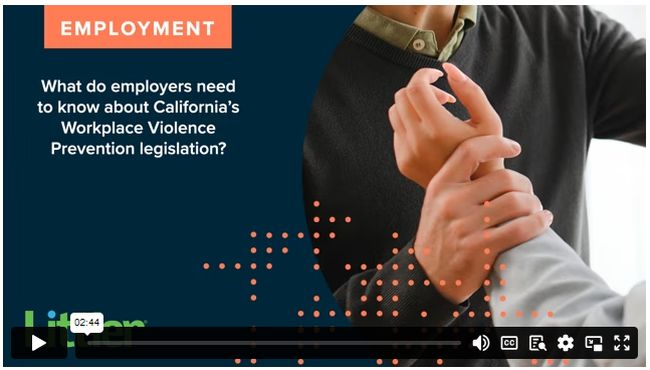What do employers need to know about California's Workplace Violence Prevention legislation?
California's Workplace Violence Prevention Senate Bill 553, which was signed into law on September 30, 2023, created the first general industry workplace violence prevention safety requirements in the United States.
The requirements – which are pretty dense – will be applicable to nearly all California employers, with very few exceptions.
By July 1, 2024, covered employers must develop and implement an effective workplace violence prevention plan, either as part of their Injury and Illness Prevention Plan, or maintained as a separate document. A site-specific plan is needed for each location.
Employers would be well-served to conduct a hazard assessment of foreseeable workplace violence threats, which can range from bullying, harassment, active shooter and even hostage situations.
Requirements for a compliant plan include:
- Designating persons responsible for the plan;
- Effective procedures for the employer to accept and respond to reports of workplace violence, and to prohibit retaliation against an employee who makes such a report;
- Procedures to identify and evaluate workplace violence hazards and to correct any identified hazards;
- Procedures for post-incident response and investigation;
- and Emergency response protocols.
Employers must also seek employee input to develop and implement the plan.
The law contains a number of recordkeeping requirements. For example, employers must maintain a Violent Incident Log for all incidents of workplace violence, even if the incident did not result in injury.
Last but not least, employers need to train their employees on the plan. This includes initial training about the plan when it is first established – by July 1, 2024—as well as annual training thereafter.
The training requirement does not end there: when a new workplace violence hazard is discovered or changes are made to the plan, the employer must provide additional training focused on the specific hazard or plan modifications.
The content of this article is intended to provide a general guide to the subject matter. Specialist advice should be sought about your specific circumstances.



